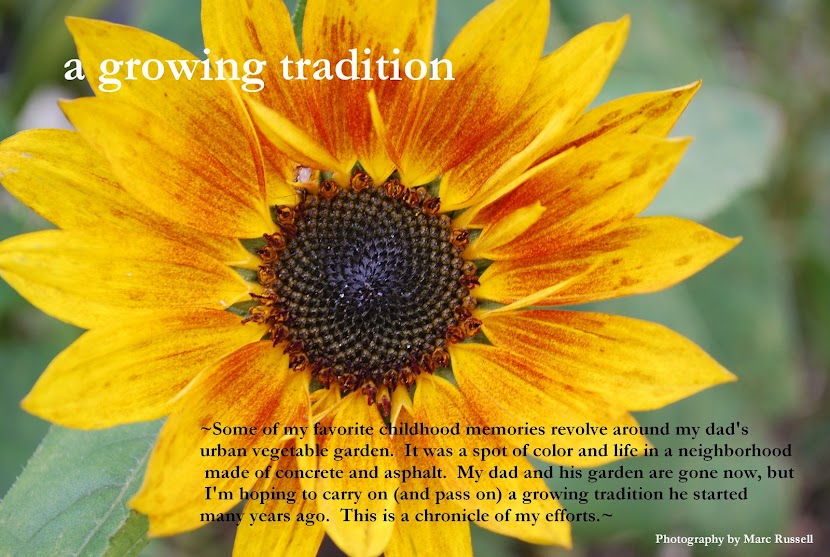Thursday, March 24, 2011
Things to Ponder - Out in the Field and In the Kitchen
A while back, I came across this video for Pete's Greens, a local four season farm located in Northern Vermont. Hopefully we'll be able to make it up there one of these days to witness their amazing operation firsthand. Whenever I see a farm operation such as this, I can't help but to think of what an impact Eliot Coleman's ideas have had on our next generation of New England farmers. It's hard to regard food as a "commodity" when you are growing it in a way that is more sustainable and locally inspired.
I'll admit that I probably have an overly romanticized view of what it would be like to farm for a living. (I'm a dreamer, what can I say?) Still, I can't help but to fantasize about one day stepping off of the corporate rat race and starting a little homegrown business of my own, whatever that might be.
On a completely different subject, I purchased a copy of Tartine Bread a while ago but have yet to venture into the kitchen with it. To create bread made entirely from a natural yeast starter sounds amazing, especially if you're interested (like I am) in stripping down this wondrous craft to its simplest, less predictable and wildest form. I'm sure it will be a while before I can get one of my bread to look as good as the ones shown in this video - that is if I can find the time to go down this path. I hate to admit it but I've become a No Knead bread junkie (it's just so darn simple and convenient to prepare and I've come up with a version that we really enjoy).
Has anyone tried the techniques described in this book?
Subscribe to:
Post Comments (Atom)






Nice to hear that it is spreading. I've been reading Coleman's books for a while now and recently I have had the opportunity to use his twice tempered ideas on a very small scale as I've moved to a much colder climate- they work, of course. He is obviously a student of his work- I'm surprised that he didn't mention him, as Coleman is all about sharing information- others need to know this and it's finally happening more and more! Now if I can just get my little 1/4 acre going! Ah, some day.
ReplyDeleteThat was very informative and inspiring.
ReplyDeleteThanks for posting the Petes Greens video... I don't have time to watch the second one. I just got my no knead bread out of the oven and have to start making the last leek and potato soup for awhile.
ReplyDeleteThanks for posting the videos. I'll have to go check out Tartine. They are in San Francisco and I live in the Bay Area :-)
ReplyDeleteMy go-to bread recipe these days is from the fictional book "Bread Alone". It requires kneading, but uses less yeast, and a slower, longer rise time.
ReplyDeleteI share your romantic farm dreams, but in mine I am independently wealthy- worrying about losing the farm isn't so dreamy!
That was an awesome video. I heart Pete, and I love what I heard. Great stuff all around, thanks for sharing Thomas.
ReplyDeleteThere was a devastating fire at Pete's Greens in January. http://www.petesgreens.com/Fire.html
ReplyDeleteThat's quite an inspiring video. What a shame about the fire, I do hope they recover. This is just the sort of farm operation we should be subsidizing with our tax dollars, not the corporate fat-cat absentee farmers.
ReplyDeleteAnyway, I have the Tartine bread book and have made his basic country bread a few times. I recommend that you read the chapter about the basic country bread thoroughly a couple of times before attempting to bake the bread. Don't skip to one of the variations, first try to master the basic loaf. And follow all the directions as closely as possible, it's a very wet dough which makes it tricky to work with but if you follow his directions it all comes together. My first loaf was a door stop but that was because I over-proofed it for the final rise. After that I made some really good loaves. I think that the recipes for the variations are not as well tested. I had particular problems with the Polenta bread, it came out really gummy. The semolina bread was also difficult and I didn't like the amount of seeds he used, I cut back to begin with and it was still too much. I do really like his method of developing the dough by a series of folds rather than kneading, it works amazingly well and results in a bread with much better structure than the no-knead method with just a little more work. I've adopted that method for making most of my breads although I don't do as many folds. I also like his idea of swiping some of the bread dough to make pizza and I regularly increase the amount of dough to produce enough extra to have a large pizza.
It’s great to see a white house garden, but I’d like to see Obama put an end to subsidies for industrial agriculture -- we just can’t afford it any more. It would also give a boost to our sustainable local food production. But giving subsidies to local agriculture would be a big mistake. Trying to produce all, or most, of our food locally would be even less sustainable than industrial agriculture. There’s simply no way that New England can efficiently produce more than a small percentage of the food its population needs. Ultimately, the real value of local food is cultural, not economic, environmental or geopolitical.
ReplyDeleteIt's great to see someone in the front line of the local production front - using such a great video to encourage others.
ReplyDelete